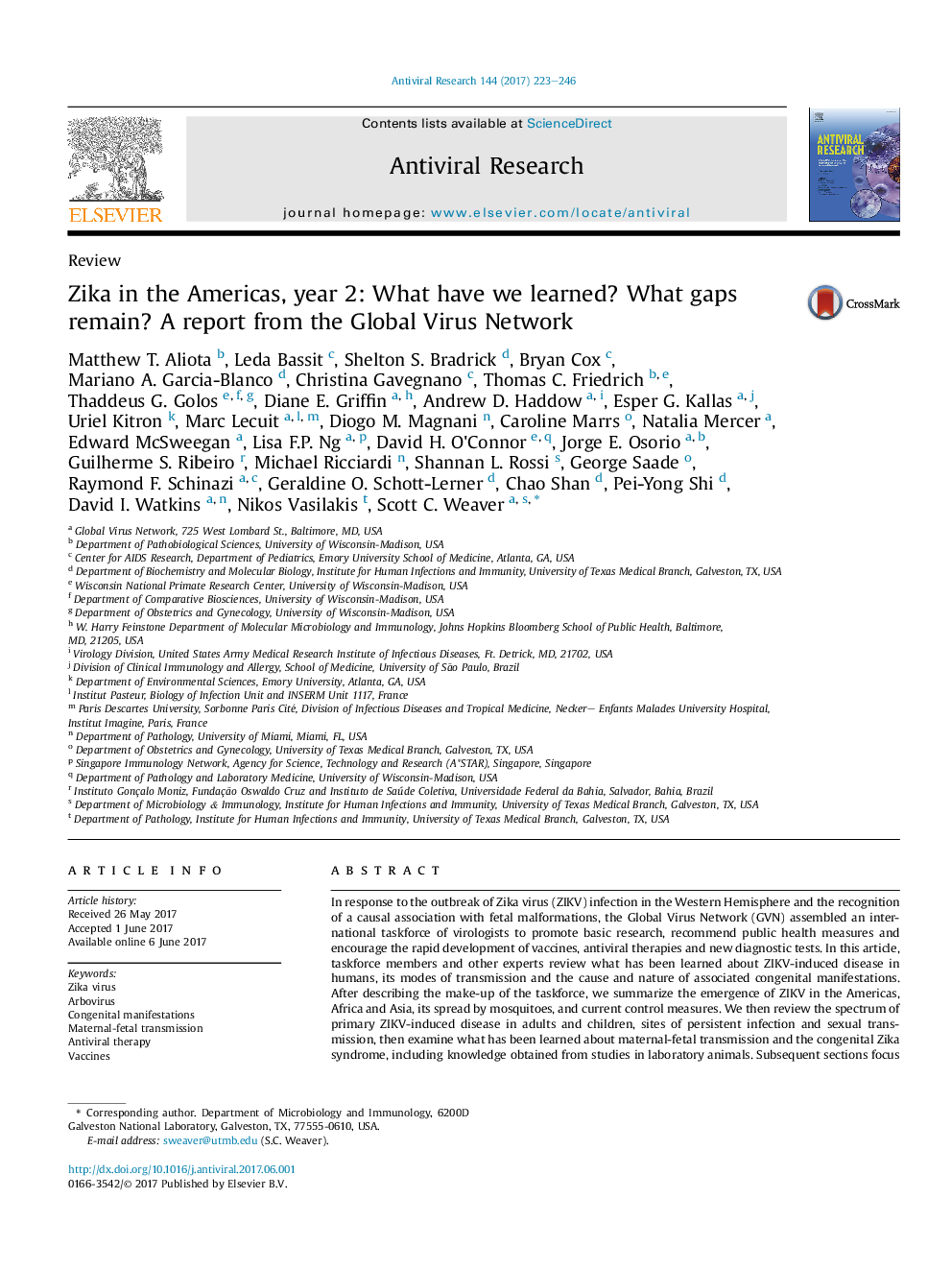| Article ID | Journal | Published Year | Pages | File Type |
|---|---|---|---|---|
| 5551717 | Antiviral Research | 2017 | 24 Pages |
â¢The Global Virus Network assembled a task force to respond to the outbreak of Zika virus infection in the New World.â¢This report summarizes what has been learned about ZIKV disease in humans to date.â¢Progress has been made in developing animal models, vaccines and therapeutics, with some Phase I trials completed.â¢Critical questions remain regarding the cause of congenital abnormalities in infants of mothers infected with ZIKV.â¢Novel strategies are needed to contain ZIKV spread in the Americas and around the world.
In response to the outbreak of Zika virus (ZIKV) infection in the Western Hemisphere and the recognition of a causal association with fetal malformations, the Global Virus Network (GVN) assembled an international taskforce of virologists to promote basic research, recommend public health measures and encourage the rapid development of vaccines, antiviral therapies and new diagnostic tests. In this article, taskforce members and other experts review what has been learned about ZIKV-induced disease in humans, its modes of transmission and the cause and nature of associated congenital manifestations. After describing the make-up of the taskforce, we summarize the emergence of ZIKV in the Americas, Africa and Asia, its spread by mosquitoes, and current control measures. We then review the spectrum of primary ZIKV-induced disease in adults and children, sites of persistent infection and sexual transmission, then examine what has been learned about maternal-fetal transmission and the congenital Zika syndrome, including knowledge obtained from studies in laboratory animals. Subsequent sections focus on vaccine development, antiviral therapeutics and new diagnostic tests. After reviewing current understanding of the mechanisms of emergence of Zika virus, we consider the likely future of the pandemic.
